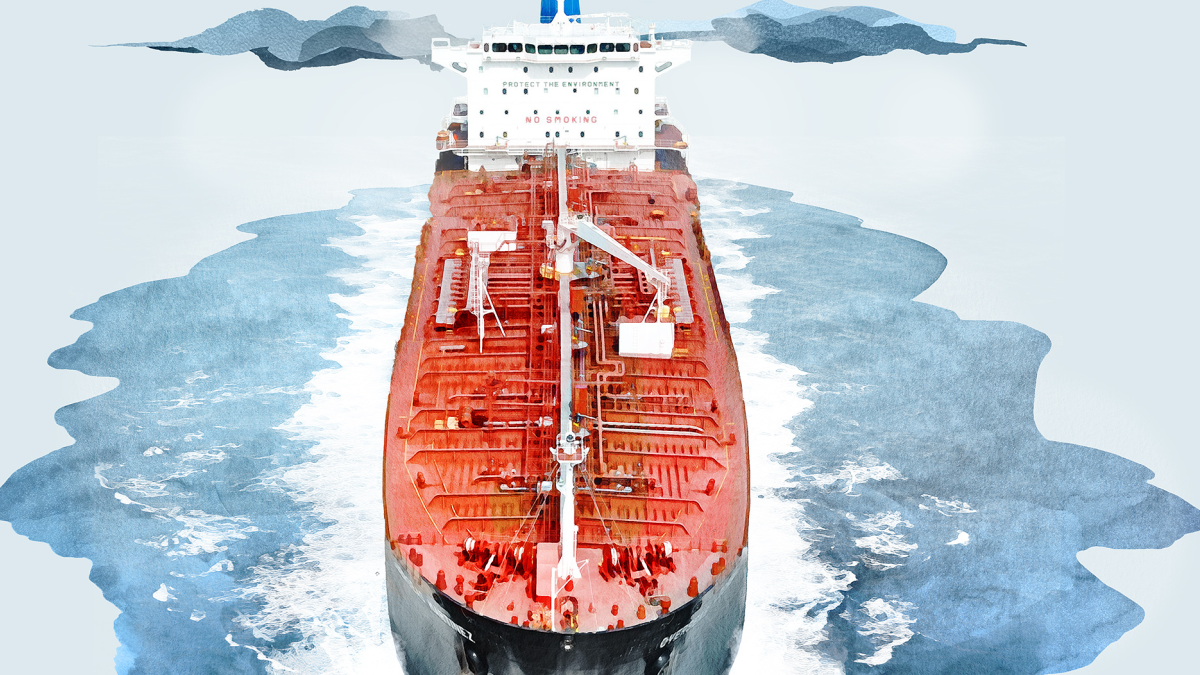The rapid development of simulators and investments in new technologies are visible on the simulated bridges and in the engine control rooms at Aboa Mare, located near the Port of Turku. The very latest is the introduction of the green transition in shipping to the simulators.
– The possibility to practice realistic situations increases safety and creates the conditions for a faster transition to new, sustainable technologies, summarizes Aboa Mare’s simulator manager Thomas Lundberg.
– We are improving our opportunities to participate in the development of emission-free transport. With simulators, we can work on concrete solutions that take us towards a zero level of emissions, Lundberg states.
In the background are the rapid technological development in shipping and the need to meet international climate targets.
– Shipping accounts for an ever-increasing share of global emissions, and new fuels, such as methanol, LNG, and ammonia, will play a central role in the green transition towards a more sustainable future, says course manager Thomas Friis.
RDI communications officer Nadine Karell had arranged for media representatives an opportunity to familiarize themselves with the simulators on site. This brought concreteness to the discussions, framed by the quite impressively built simulator world. In addition to the engine control rooms, there was an opportunity to visit, among other things, the bridge of an Icon-class cruise liner under the guidance of Thomas Friis.
At Aboa Mare, the Wärtsilä engine simulator has been updated. In addition, Aboa Mare has also acquired a new engine simulator manufactured by Kongsberg Maritime, which will be installed at the school at the beginning of next year. The Kongsberg simulator can simulate methanol, battery hybrids, and other future solutions alongside LNG.
– Currently, 1,400 ships use alternative fuels, which is less than one percent of the world’s merchant fleet. The carbon neutrality target is indeed extremely challenging, and through that, there is a huge need for training, Friis states.
The goal of the greenhouse gas strategy published two years ago by the International Maritime Organization (IMO) is to achieve net-zero emissions from shipping by 2050. The interim targets are at least a 20% (target 30%) reduction by 2030 and at least a 70% (target 80%) reduction by 2040, relative to the 2008 level.
Remote pilotage needs psychology
At the beginning of the event, Mirva Salokorpi, research manager in maritime technology at Novia, which is part of the Aboa Mare training centre, presented the Remote Pilotage MPV research project on remote pilotage, coordinated by Novia.
– One could say that the Danes are pioneers in remote pilotage. There, the straits and narrows are perhaps the most challenging problem when developing remote pilotage as part of today’s commercial shipping.
The goal of the remote pilotage project is to develop and test a remote pilotage concept and the related technological solutions. Likewise, tests have been carried out in Aboa Mare’s simulators, which have been used to study, for example, task division and communication in remote pilotage situations. The project is funded by Business Finland.
The idea of transitioning pilotage to be carried out via remote connections is safety-driven.
– The main reason for developing remote pilotage is the safety risks of pilotage work. Globally, accidents happen especially when pilots transfer to or from a ship, Salokorpi states.
Doctor of Psychology Jukka Häkkinen is familiar with the minds, and also the eye movements, of pilots.
Häkkinen, who has been working on a remote pilotage research project since September 2024, sheds light on the central problematics of remote pilotage.
– A key challenge in remote pilotage is the lack of shared situational awareness when the pilot and the ship’s crew are not in the same location. Forming a common operational picture is much more difficult when you cannot react immediately to the other’s actions, Häkkinen says.
– How the pilot thinks or behaves and what they prioritize. In a simulator, you can also safely raise the stress level and test stress tolerance in various disturbance situations.
In remote pilotage, what is crucial is what information is transferred from the ship to the remote pilotage center.
Häkkinen has also researched the gaze focus, or eye movements, of pilots.
– Gaze focus tells what information pilots need for their actions and thinking. The interaction and communication that takes place on the bridge is also essential and can be practiced well in simulator conditions, Häkkinen explains.
The Aboa Mare Training Center combines the maritime operations of Yrkeshögskolan Novia, Axxell, and Aboa Mare Ab. In the 2020s, the training consortium’s turnover has been in steady growth, which partly tells of the constantly growing global demand for simulator training. A significant part of the training offering is implemented in English, in addition to Swedish and Finnish. It is noteworthy that Aboa Mare organizes the training for future chief engineers only in English.
Text and images Mikko Laitinen





